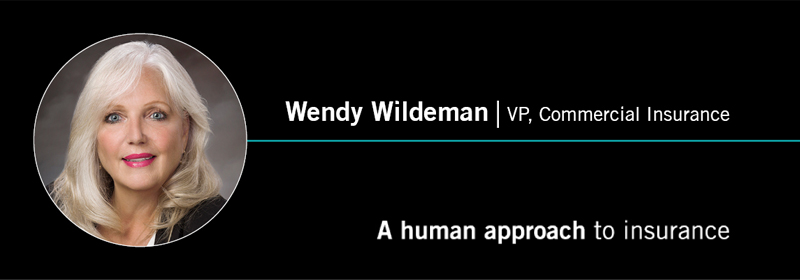The Importance of Updating Material Change in Risk
Your insurance policies need to be updated to reflect life changes, otherwise you are leaving yourself open to being underinsured.
By Wendy Wildeman, VP, Commercial Lines
Change is something we all face as we transition through the different phases of life, such as opening a home-based business, renovating an office space or a new driver routinely using your vehicle. If you have never heard the term ‘changes in material risk’ you are not alone. A lot of people do not know about this until they must make an insurance claim and find out that it may not be covered or that their policy is void due to a failure to update your changes in material risk.
It is important to know what constitutes a material change in risk so that you can notify your broker to ensure proper coverage. Let’s face it – it is rare to make an insurance claim when something positive has happened. In times of stress, having peace of mind with regards to your policy can alleviate some of your worries when going through the claims process.
In my experience, I have worked with a homeowner who decided to build a large shop on his personal property. While he did inform his broker and added the shop to his policy – he neglected to inform the broker a few years later that he had started up a small equipment repair facility in the premises. When the shop was lost to fire a few months later, his claim was denied based on a material change in risk. The insurer understood that the shop was being used for personal exposures – not a commercial venture.
What are changes in material risk?
A material change is defined as a substantial and continuing change that increases the risk involved with insuring your property. This is a condition under your insurance policy that states you must give prompt notice to your insurer if there has been a change in your circumstances.
A good example would be deciding to use your personal vehicle for commercial use such as a ride sharing app, like Uber or Lyft, and not updating your insurance policy to reflect the change in your vehicle’s usage. If you are involved in an accident while transporting others, it may void your policy and leave you open to litigation from your passengers and other people involved.
In cases like driving for a ride share company, an insurer needs to be notified of the change so that they can consider whether the risk of insuring you is too high or if they need to increase your premiums.
Some other examples of changes in material risk include:
- Updating your vehicle with modifications such as lowering the suspension or altering the size of the engine.
- Operating a business, like a day home, yoga studio or hair salon, out of your home.
- Having an occasional driver routinely use your car (such as a teenager with a new driver’s license).
As you navigate the updates to your policy, it is important to work with a broker so that you are getting the best price. Your broker can connect you to a professional insurance appraiser, who will establish the most accurate value for your property. Your broker will then work with you to update your policy, based on your insurance appraisal, so your property is adequately covered for any potential losses.
Check out this blog post to learn more about insuring to value.
Reducing your premiums
When making renovations or changes to your property, it can be alarming to see the costs of your insurance rise to reflect these changes but there are also steps you can take for material changes in risk to help reduce your insurance premiums. They can include:
- Adding a home security system can help to reduce your policy costs and the potential risks of losses due to burglary and potential water damage.
- Home renovations that include upgrades to the wiring, adding a sump pump or replacing a roof can help reduce your premium costs because they lower the risk profile of your house.
- Remembering to remove people from your auto insurance policy who are no longer routinely driving your vehicle.
- Updating your broker about any commercial changes to your property (such as no longer running a home business or driving for a ride share company).
- Reviewing the limits of your insurance policies at least once a year and notifying your broker if you have any changes.
Another approach to reducing your premiums is to take on higher deductibles. If you are interested in this, have your broker provide you with options to reduce the premiums paid. It is also important to think about using your insurance policy for the catastrophic events versus more minor incidents.
Working with your broker
If you have any questions about changes in material risk with regards to your property and how it is being used, reach out to your broker. Rogers Insurance brokers specialize in a variety of industries and will help you navigate the updates to your policies and help you find the right coverage for your budget.
Your broker is your best resource for ensuring you and your property are protected. Speak with them to find out more about risk management and insurance.
Wendy Wildeman is the Vice President, Commercial Lines, at Rogers Insurance. With more than 40 years of industry experience, Wendy specializes in real estate insurance, from development and construction to commercial and condominium management groups.
Further reading
